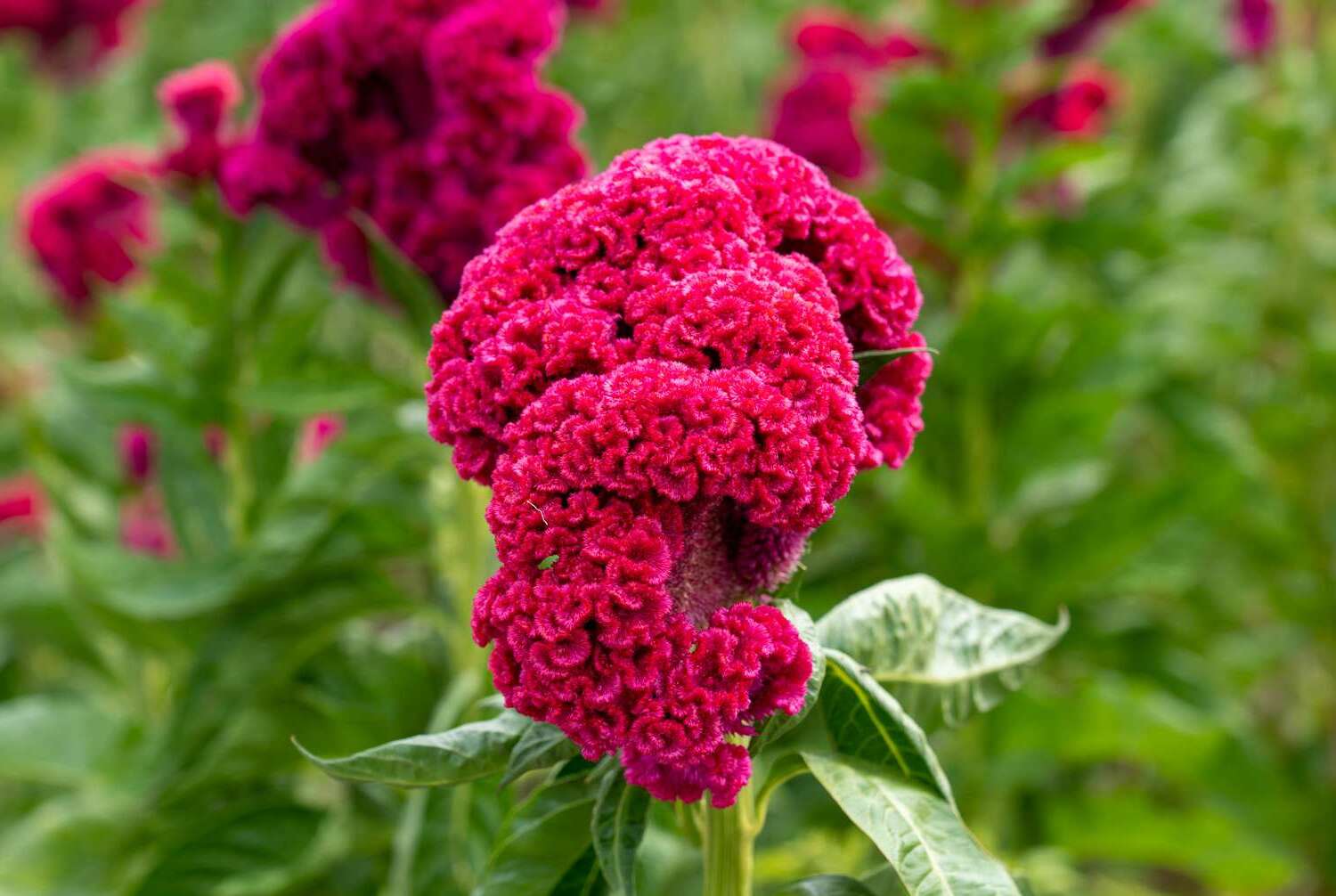
Celosia, often called cockscomb or woolflower, is a vibrant plant known for its striking, flame-like blooms. But what makes this plant so special? Celosia stands out not just for its beauty but also for its versatility and ease of care. Whether you're a seasoned gardener or a beginner, this plant can add a splash of color to any garden. Its flowers come in various shapes and colors, making it a favorite for floral arrangements. Plus, it's not just pretty; some varieties are edible and packed with nutrients. Ready to learn more? Here are 28 fascinating facts about Celosia that will make you appreciate this unique plant even more.
What is Celosia?
Celosia, often called cockscomb or woolflower, is a stunning plant known for its vibrant colors and unique textures. These plants are popular in gardens and floral arrangements due to their striking appearance.
-
Celosia belongs to the Amaranth family, which includes other colorful plants like amaranth and gomphrena.
-
The name "Celosia" comes from the Greek word "kelos," meaning "burned," referring to its flame-like flower heads.
-
Celosia flowers come in various shapes, including plumes, spikes, and crests, making them versatile for different garden styles.
-
These plants are native to tropical regions of Africa, Asia, and South America.
Types of Celosia
Celosia comes in several varieties, each with its unique characteristics. Knowing the different types can help you choose the right one for your garden.
-
Celosia argentea: Known for its silvery foliage and bright flowers, this type is often used in ornamental gardens.
-
Celosia cristata: Also called cockscomb, this variety has crested, brain-like flower heads.
-
Celosia spicata: This type features spiky, wheat-like flower heads and is sometimes called wheat celosia.
-
Celosia plumosa: Known for its feathery, plume-like flowers, this variety adds a soft texture to gardens.
Growing Conditions
Understanding the ideal growing conditions for Celosia can ensure your plants thrive and produce vibrant blooms.
-
Celosia prefers full sun, requiring at least six hours of direct sunlight daily.
-
These plants thrive in well-drained soil with a pH between 6.0 and 7.0.
-
Celosia is drought-tolerant but benefits from regular watering, especially during dry spells.
-
Adding compost or organic matter to the soil can improve its fertility and drainage.
Planting and Care
Proper planting and care are essential for healthy Celosia plants. Here are some tips to help you get started.
-
Plant Celosia seeds indoors 4-6 weeks before the last frost date for an early start.
-
Transplant seedlings outdoors after the danger of frost has passed and the soil has warmed.
-
Space plants 6-12 inches apart to allow for proper air circulation and growth.
-
Deadhead spent flowers to encourage continuous blooming throughout the season.
Pests and Diseases
Celosia is relatively low-maintenance but can still be affected by pests and diseases. Knowing what to look for can help you keep your plants healthy.
-
Aphids are common pests that can be controlled with insecticidal soap or neem oil.
-
Spider mites can cause damage to Celosia, especially in hot, dry conditions. Regularly misting the plants can help deter them.
-
Fungal diseases like powdery mildew can affect Celosia, particularly in humid conditions. Ensure good air circulation and avoid overhead watering to prevent this.
-
Root rot can occur in poorly drained soil. Plant Celosia in well-drained soil to avoid this issue.
Uses of Celosia
Celosia is not only beautiful but also versatile. Here are some ways you can use this plant.
-
Celosia is popular in floral arrangements due to its long-lasting blooms and vibrant colors.
-
The dried flowers of Celosia retain their color and shape, making them ideal for dried flower arrangements.
-
In some cultures, Celosia leaves and flowers are used in traditional medicine for their purported health benefits.
-
Celosia is edible and is often used in African and Asian cuisines. The leaves can be cooked like spinach.
Fun Facts about Celosia
Celosia has some interesting and lesser-known facts that make it even more fascinating.
-
Celosia is sometimes called "brain flower" due to the unique shape of its crested variety.
-
The plant's vibrant colors come from betalains, pigments also found in beets and Swiss chard.
-
Celosia is a symbol of immortality in some cultures, representing the eternal flame of life.
-
The plant is often used in religious and cultural ceremonies, particularly in Africa and Asia.
Celosia's Lasting Impression
Celosia isn't just a pretty face in the garden. This vibrant plant, with its unique flower shapes and bold colors, offers more than meets the eye. From its edible leaves to its medicinal properties, Celosia proves to be a versatile addition to any garden. It thrives in warm climates and requires minimal care, making it perfect for both novice and experienced gardeners. Plus, its ability to attract pollinators like bees and butterflies adds ecological value. Whether you're looking to add a splash of color to your garden or seeking a plant with multiple uses, Celosia stands out as a top choice. So next time you're at the nursery, consider picking up a Celosia plant. You'll not only enhance your garden's beauty but also enjoy the many benefits this remarkable plant has to offer.
Was this page helpful?
Our commitment to delivering trustworthy and engaging content is at the heart of what we do. Each fact on our site is contributed by real users like you, bringing a wealth of diverse insights and information. To ensure the highest standards of accuracy and reliability, our dedicated editors meticulously review each submission. This process guarantees that the facts we share are not only fascinating but also credible. Trust in our commitment to quality and authenticity as you explore and learn with us.


